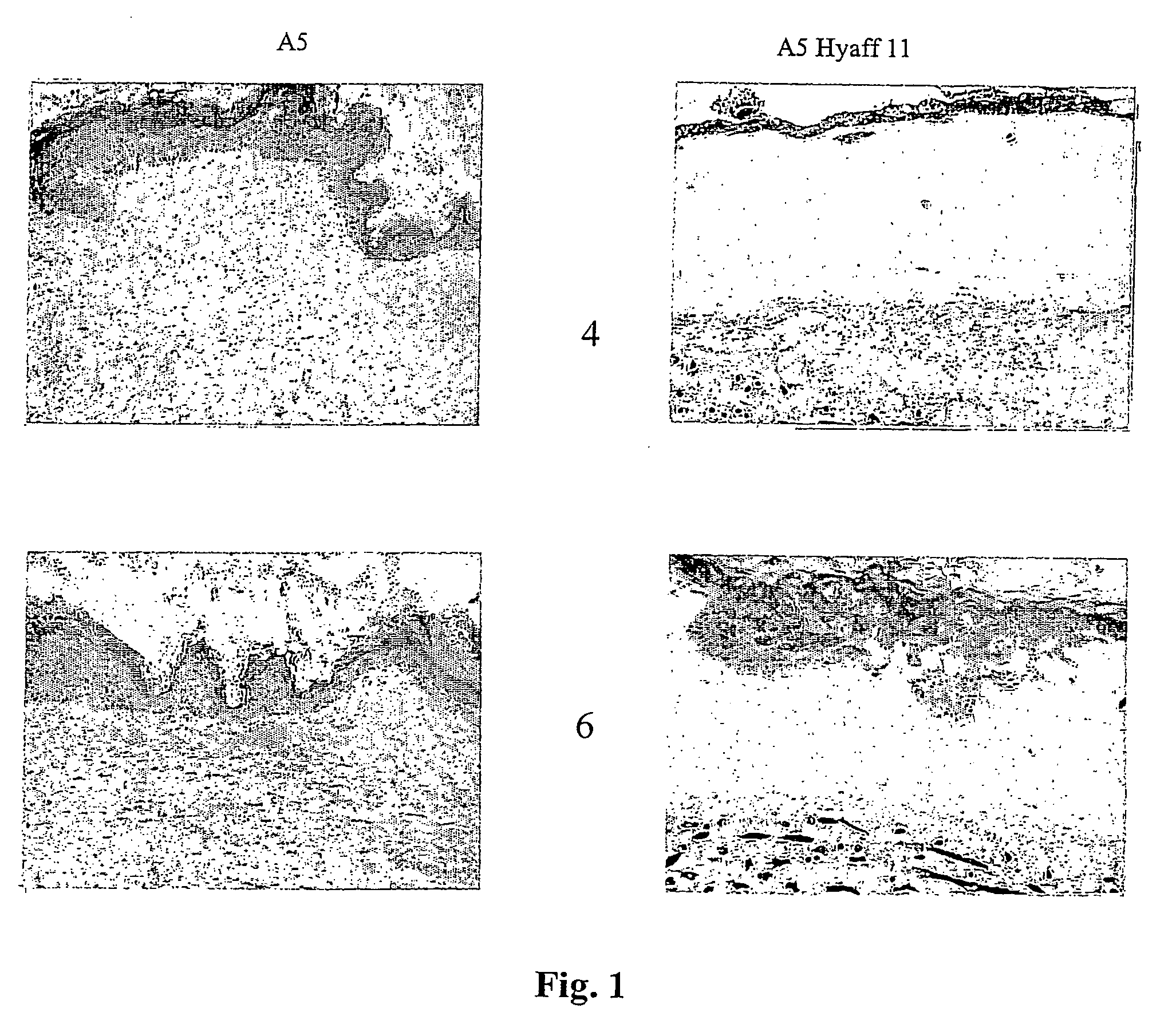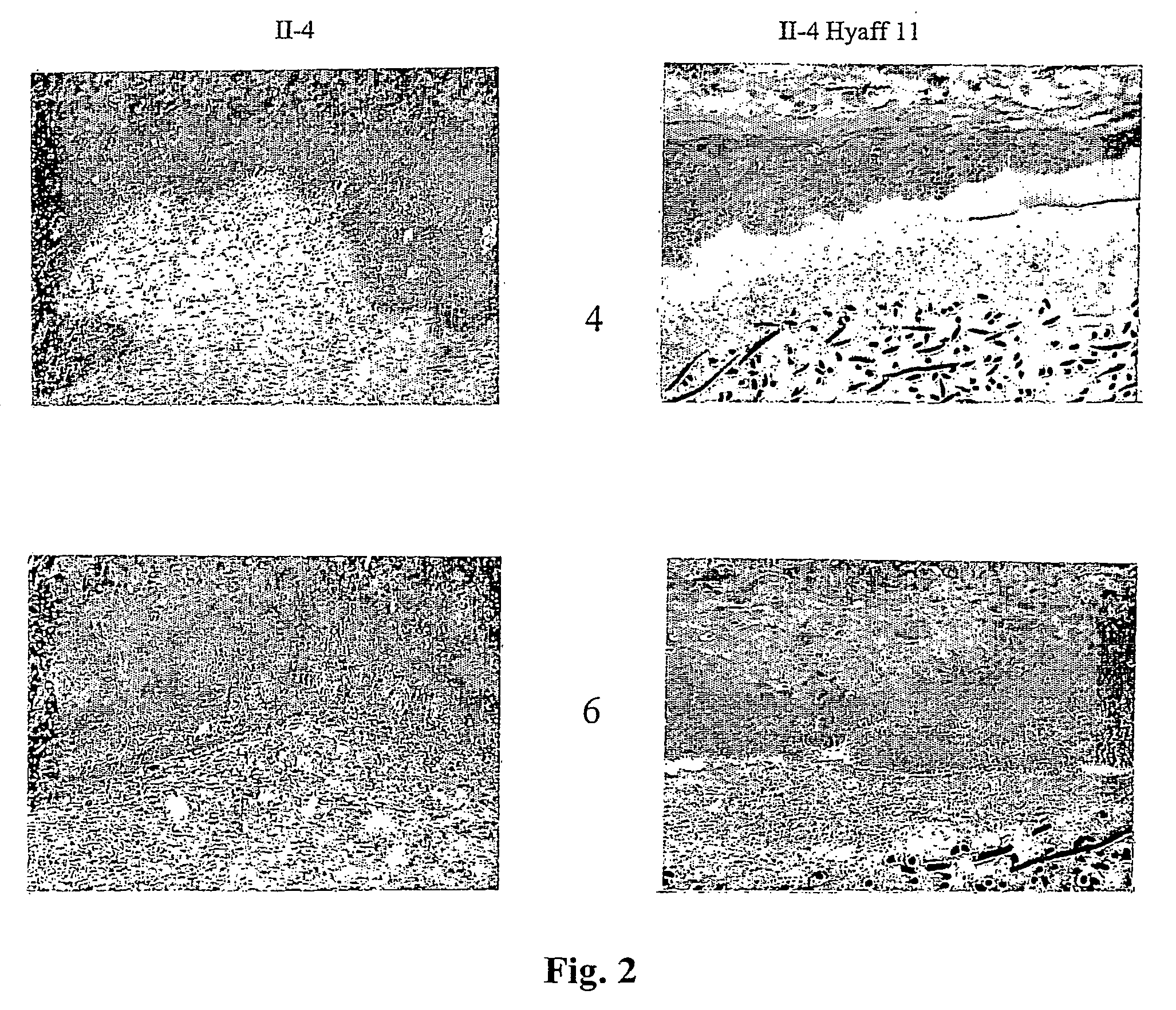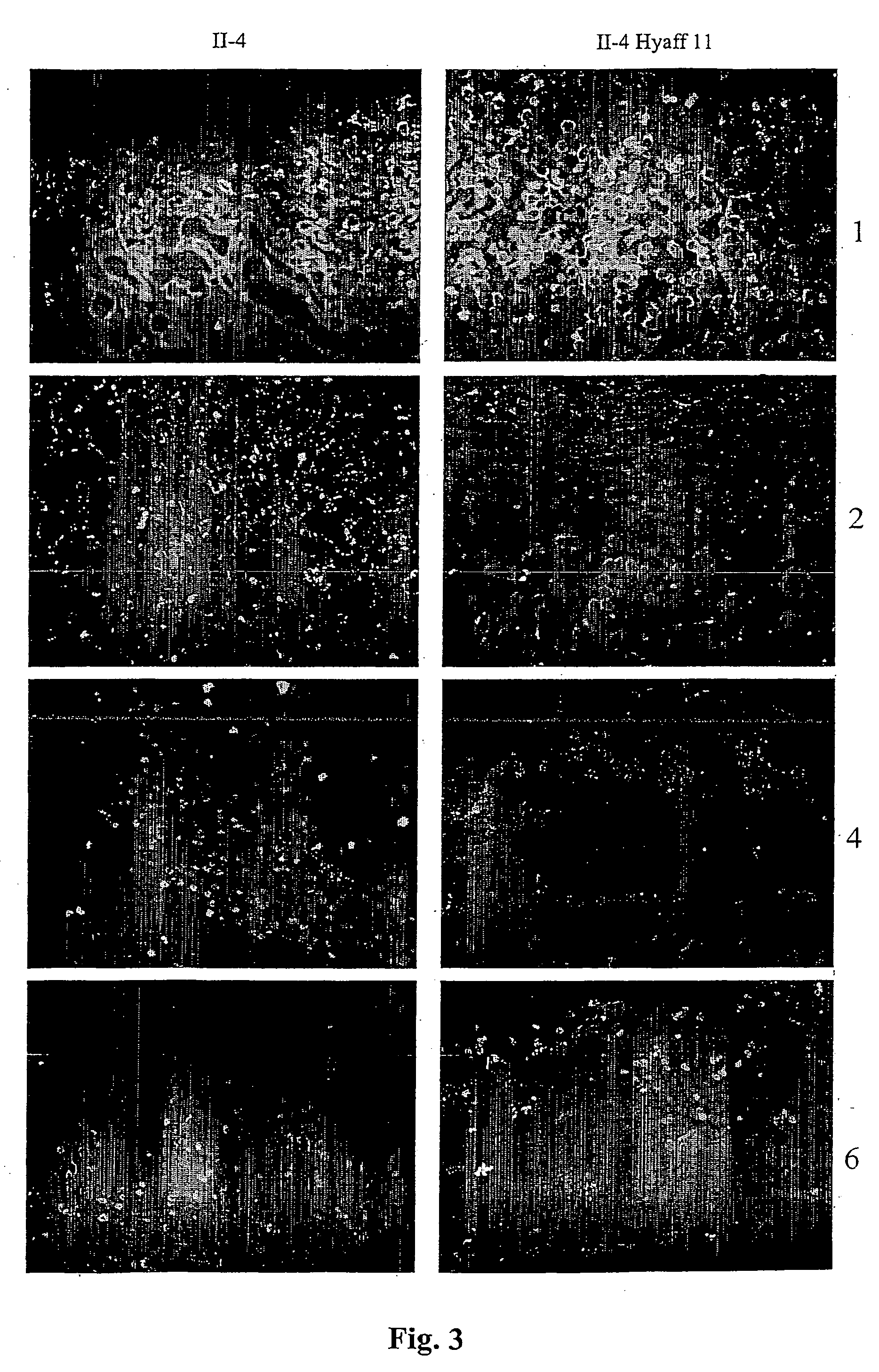Biomaterials based on hyaluronic acid for the anti-angiogenic therapy in the treatment of tumors
a biomaterial and hyaluronic acid technology, applied in the field of biomaterials based on hyaluronic acid for the treatment of tumors, can solve the problems of anti-angiogenic clinical and many toxic side effects
- Summary
- Abstract
- Description
- Claims
- Application Information
AI Technical Summary
Problems solved by technology
Method used
Image
Examples
Embodiment Construction
[0020] The present invention relates to biomaterials based on hyaluronic acid derivatives made into non-woven felts (as the preferred form of biomaterial), optionally in association with natural, synthetic or semisynthetic biopolymers, for use in the medical-surgical field as a new anti-angiogenic therapy (“in situ”), optionally associated with classic pharmacological anticancer therapies and / or radiotherapy, to modulate indirectly the proliferation of tumours, thus blocking the formation of local relapses and, therefore, any new metastases.
[0021] In order to study, characterise and then assess “in vivo” the effect of the biomaterial of the present invention in the angiogenic process that supports the development of skin carcinomas (considered to be a clarifying example), the Applicant has developed a new model of tumour / stromal cell support interaction, described as follows: [0022] 1) two cell lines of human keratinocytes transfected with the ras-oncogene: HACaT II-4, malignant va...
PUM
| Property | Measurement | Unit |
|---|---|---|
| Structure | aaaaa | aaaaa |
Abstract
Description
Claims
Application Information
 Login to View More
Login to View More - R&D
- Intellectual Property
- Life Sciences
- Materials
- Tech Scout
- Unparalleled Data Quality
- Higher Quality Content
- 60% Fewer Hallucinations
Browse by: Latest US Patents, China's latest patents, Technical Efficacy Thesaurus, Application Domain, Technology Topic, Popular Technical Reports.
© 2025 PatSnap. All rights reserved.Legal|Privacy policy|Modern Slavery Act Transparency Statement|Sitemap|About US| Contact US: help@patsnap.com



